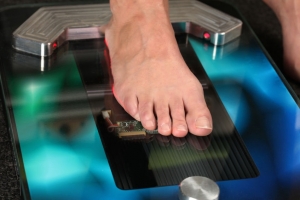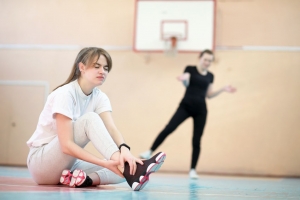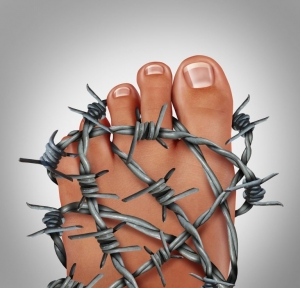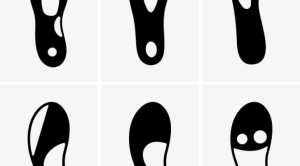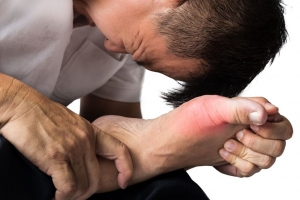Connect With Us
Blog
Displaying items by tag: Foot Pain
FAQ’s about Custom Orthotics
At Superior Foot & Ankle Care Center we often get questions from our Los Angeles County patients about custom orthotics. Below are some of the most frequently asked questions about this very effective, non-invasive type of podiatric treatment.
Q: What conditions can orthotics help treat?
A: Orthotics are footwear inserts that are used to provide support and reduce pain, discomfort, pressure or imbalance, and other symptoms caused by a wide range of foot and ankle deformities, injuries, and diseases as well as biomechanical problems. Some common conditions that can be treated with orthotics include flat feet, heel pain, arthritis, bunions, calluses, corns, big toe pain, and neuropathic ulcerations.
Q: What’s the difference between over-the-counter shoe inserts and custom orthotics?
A: Over-the-counter inserts can provide some arch support and treat minor discomfort and pain. Prescription orthotics, however, are made from a mold of your unique foot and therefore better able to address and correct your specific foot issues. Prescription orthotics are also constructed of more durable materials and can last a long time.
Q: What are some common kinds of prescription orthotics?
A: Orthotics come in many shapes and sizes and are made from a variety of materials depending on individual needs. They may take the form of insoles, arch supports, heel pads, or foot cushions. Generally, there are two classifications of orthotics. Accommodative orthotics offer cushioning and reduce pressure on a vulnerable area of the foot. Functional orthotics are used to treat foot problems caused by foot and ankle motion and alignment.
Q: How are custom orthotics made?
A: The first step is to have our podiatrists, Dr. Victoria M. Foley and Dr. Constance Ornelas, conduct a thorough examination of your feet and ankles and evaluate how they are impacting your knees, legs, and lower back. Once the foot doctor has a diagnosis of your podiatric disorder and a complete understanding of the biomechanics of your foot, a mold of your foot will be made from a plaster cast or a specialized computer scan that maps your foot structure and your gait. The podiatrist will then check to make sure the orthotic is fitted properly and monitor your progress.
If you would like to learn more about orthotics and whether or not they can help you, contact our Long Beach office at (562) 420-9800 office for an appointment today.
Taking Care of the Feet of Young Athletes
At Superior Foot & Ankle Care Center we know that our Los Angeles County patients have suffered through the pandemic shutdowns. One of the most affected are our young patients. As restrictions ease, children are overjoyed to be able to get back to sports, but parents need to be vigilant about potential foot problems. After an especially long period of inactivity, young feet are more likely to experience foot pain and are vulnerable to some common podiatric disorders. Here’s how parents can help:
Update Sports Shoe
The single biggest factor in podiatric health, even in young children, is shoe choice. With fast-growing feet, chances are your child will need new athletic shoes for the sport they plan to participate in. Shop for shoes that are designed specifically to accommodate their chosen sport. Basketball sneakers, for example, offer extra ankle support while running shoes have more cushioning to absorb the stress of repetitive pounding. Fit is just as important as style. Be sure to:
- Have both of your children’s feet professionally measured
- Shop for shoes at the end of the day after children have been active—that’s when their feet will be at their largest
- Bring or have your child wear the socks he or she will use with their athletic shoes to ensure a more accurate fit
- Try on both shoes and have your child walk around the store long enough to determine they are comfortable
Look for Signs of Foot Pain
In many instances, young children are not able to articulate foot pain. However, parents may notice unusual behaviors that can signal hurting feet. These include:
- Lack of interest in sports or fitness activities they previously enjoyed
- Lagging behind peers in casual backyard play
- Complaints that feet feel “tired”
- Limping, walking on tip toe or other strange gaits
If your child exhibits any of the above symptoms or complains of foot pain, make an appointment at our Long Beach office at (562) 420-9800. Our podiatrists, Dr. Victoria M. Foley and Dr. Constance Ornelas, will examine your child’s feet and get to the source of foot pain so that they can be properly treated and back in the game in no time.
Keep it Moving for a Healthy Heart
February is American Heart Month and at Superior Foot & Ankle Care Center we know that your feet and your heart have a loving relationship. A healthy heart means good circulation which is beneficial to your feet. Your feet play an important role in a key element of heart health: staying active. We want our Los Angeles County patients to know that regular physical activity is one of the best ways to reduce your risk of heart disease. The American Heart Association recommends adults get in 150 active minutes (2.5 hours) each week. In addition to keeping your heart healthy, there are other benefits of an active lifestyle including:
- Reduced risk of other diseases such as stroke, diabetes, high blood pressure, dementia, and several types of cancer
- Help with weight loss or maintaining an appropriate weight
- Better sleep
- Less anxiety and depression
- Improved bone strength and balance, which decreases fall risk
- Mental sharpness: improved cognition, attention, processing, and memory
Help Your Feet Help Your Heart
For your feet to be able to help you stay active, they too need care and attention. Follow these tips to ensure that your feet and ankles are in tip-top shape for physical activity.
Take Care of Foot Pain—continuing to work out if your feet or ankles hurt is a bad idea. Any podiatric discomfort should be evaluated by our podiatrists, Dr. Victoria M. Foley and Dr. Constance Ornelas. The foot doctor will examine your feet and diagnose any problems that will impede your ability to be active. Your podiatrist can also make recommendations to help you accommodate chronic foot problems like plantar fasciitis and bunions. Shoe modifications, custom orthotics, and other recommendations can help. Make an appointment by contacting our Long Beach office at (562) 420-9800.
Choose Shoes Wisely—what you wear on your feet can have a big impact on the success of any fitness regimen. Be sure the athletic footwear you are using is the right kind for the activity you’ve chosen. Check shoes regularly for signs of wear such as compacted insoles, worn down heels, and rips or tears. Get your feet professionally measured to ensure you’re wearing the correct size.
Mix Up Your Routine—choose a variety of different types of activity each week. A mix of aerobic and strength training will benefit your heart and avoiding repetitive strain and impact is good for your feet.
If you have additional questions about heart health, fitness, and your feet, contact us today.
Give Your Feet the Care They Deserve
According to the American Podiatric Medical Association, most Americans will have put 75,000 miles on their feet by the time they reach the age of 50! Although in some ways our lives have become more sedentary than in previous generations we now engage in much more rigorous fitness activities to compensate then in times past which can mean even greater wear and tear on feet and ankles. Take running, for example, which puts pressure on each foot equivalent to 3 to 4 times the weight of your body. Even walking for a person who weighs 150 pounds will exert an estimated 127,000 pounds of pressure per foot per mile. At Superior Foot & Ankle Care Center we want to share these figures to help you gain more respect for your feet and the importance of caring for them. Your feet are wonderfully made complex structures comprised of 26 bones, 33 joints and more than 100 muscles, tendons and ligaments. You can help keep your feet healthy and prevent many common problems by following a few footcare basics:
- Develop a regular care regimen. Wash feet daily and dry thoroughly (especially between the toes). Apply a rich moisturizer to keep skin supple and hydrated. If you tend to sweat excessively, use a talc or anti-fungal foot powder as well.
- Make good shoe choices. Poorly fitting shoes are one of the biggest causes of foot problems. Be sure that toes are not squeezed and that the shoes you wear provide good arch and ankle support. Avoid overly high heels and discard shoes when they are worn out.
- Exercise wisely. Being fit is important for your feet and the rest of your body too. Regular exercise is recommended but be sure to start gradually and work up to longer and more intense workouts in order to avoid injury.
- Inspect your feet periodically. Look for changes in size, shape, skin color or temperature as well as any lumps, bumps or unusual changes in your toes. Most foot problems are more successfully treated and with less invasive means if caught in the early stages. Report anything suspicious to your foot doctor.
- Don’t ignore pain in your feet—it’s never normal! Our board certified podiatrists, Dr. Victoria Foley and Dr. Constance Omelas will conduct a thorough examination of your feet and diagnose the source of your pain. A custom treatment plan will soon have you on track to getting back to the active lifestyle you normally enjoy. Contact our Long Beach office by calling: 562-420-9800 for an appointment.
What is Cellulitis
Understanding Cellulitis
Cellulitis is a very common form of bacterial infection which can cause redness, swelling, and a warm sensation under the skin. It appears on the lower legs, although it can also appear on other areas of the body and face as well.
If left untreated, Cellulitis can quickly turn from an infection to an abscess, or even a much more serious illness called Necrotizing-Fasciitis, or Flesh Eating Disease.
In 2013, roughly 37 million cases of Cellulitis were reported worldwide, with an estimated 30,000 deaths resulting from complications related to this infection.
Causes of Cellulitis
Cellulitis usually occurs when streptococcus or staphylococcus bacteria enter the body through an abrasion or cut. Those at particular risk are the elderly and those with pre-existing immune-deficiency conditions such as diabetes.
Owing to the decreased blood flow inherent with diabetes and other immune deficiencies, the bacteria, upon entering the body, are able to reproduce much quicker, making the condition much more aggressive.
However, it’s not just diabetes and immune-deficiencies which can lead to Cellulitis. There are many pre-existing conditions which can lead to cellulitis. Some common conditions are spider bites, eczema, Athlete’s Foot and open wounds from tattoos.
Others are more specific to children and the elderly.
Chicken Pox, for example, can leave a child’s skin open to infection. Similarly, bed sores and other abrasions common to the elderly can also lead to infection. Proper cleaning and sterilization of affected areas is always encouraged.
Densely-populated living spaces such as dormitories, hostels, retirement homes and shelters are common breeding grounds for Cellulitis. As with Athlete’s Foot and other highly contagious conditions, it can easily be transmitted through shared contact with hygienic facilities. Preventative measures like shower shoes and proper toweling-off are always recommended.
As this is an infection, it can spread quite easily through the bloodstream and into the lymphatic systems. It is extremely important that Cellulitis be treated early to avoid much more serious infections. Symptoms of infection include fever, chills, nausea and fatigue. Increased redness and swelling around the infected area are also common.
A diagnosis of Cellulitis can easily be made by a qualified health professional, like Dr. Vikki and the team at Superior Foot & Ankle Care Center. Obtaining a proper and timely diagnosis is crucial. The longer it is left untreated, the more likely it will develop into something much harder to treat.
Treatment for Cellulitis
Antibiotics are the most common approach to Cellulitis. Similar to other streptococci-caused illnesses like Strep Throat, It tends to clear up within the first week of antibiotic usage. However, for those on antibiotics who do not see improvement, additional measures may be required.
In some cases, Cellulitis will lead to an abscess. Abscesses are large, swollen areas with dark centers, which generally require surgery to drain. Any at-home attempts at drainage can lead to further complications.
Pain relief medication is often prescribed along with antibiotics. However, if the pain is extreme, medical help should be sought out as soon as possible as this may be a sign of developing Necrotizing-Fasciitis—a very aggressive infection which can lead to permanent disfigurement or death.
The preventative measures favored by Dr. Vikki and the team at Superior Foot & Ankle Care Center can help to prevent Cellulitis, and to cure any offshoot conditions.
As an active participant in the well-being of Special Olympians since 2003, Dr. Vikki understands the value of a proper diet and exercise in the prevention and treatment of Cellulitis. Excess blood sugars, like the kind that result from an improper diet can lead to increased bacterial spreading, which can exacerbate any stages of the condition.
Consult Superior Foot & Ankle Care Center
Along with a sound assessment, the staff at Superior Foot and Ankle Care can provide the educational tools necessary to prevent and treat Cellulitis.
Whether you have questions about an existing condition, or you’d simply like to learn more about how you can prevent this infection and other related health issues, schedule a consultation today with the professional team at Superior Foot and Ankle Care Center and start living healthier.
Morton’s Neuroma | What you can do
What Is Morton’s Neuroma?
Unlike most neuromas, Morton’s Neuroma is not a tumor. It is a benign build-up of tissue surrounding a nerve, which can cause pain and discomfort. Many people describe it as the sensation of having a rock in their shoe, while others describe it as a painful burning or numbing sensation upon bearing weight.
The sensations are most often triggered on the ball of the foot between the third and fourth toes. Even the smallest amount of weight pressing down on the foot can cause discomfort.
On a microscopic level, deterioration of the affected nerve can be detected, though there are usually no abnormalities visible to the naked eye. Dr. Vikki and her team at the Superior Foot & Ankle Care Center can not only provide a sound diagnosis, they can provide the level of care required to dramatically increase patient comfort and mobility.
Causes of Morton’s Neuroma
Morton’s Neuroma is often linked to wearing high heels, as well as to various forms of exercise. Women and runners are most likely to suffer from it due to the confining nature of high heels and running shoes. Existing issues such as hammertoes or bunions can also cause or exacerbate the condition.
Symptoms tend to appear slowly, beginning most often with pain upon wearing restrictive footwear. Removing the constrictive footwear should alleviate the symptoms temporarily, especially in conjunction with mild massaging, but overtime the symptoms will worsen, lasting for up to several weeks.
As the condition continues to develop, the damaging effects of the neuroma will become less and less reversible. Early action is the best defense against permanent pain and discomfort. The earlier the diagnosis, the more likely that more invasive treatment such as surgery can be avoided.
Treatment for Morton’s Neuroma
Many conditions can present similar symptoms to those of Morton’s Neuroma. Only a professional, highly skilled team like the professionals at Superior Foot & Ankle Care Center can identify the source of the problem and provide the proper treatment.
The most common treatments are corticosteroid injections and orthotics, but various other forms of treatment exist including radio frequency ablation and Sclerosing alcohol injections.
While non-invasive methods of treatment are more common, in some cases, surgery is required. A neurectomy is performed where the affected tissue is removed. In recent years, ultrasounds have become instrumental in diagnosing Morton’s Neuroma, and in assisting with treatments.
There are no effective at-home cures for Morton’s Neuroma. But there are a few things you can do to help alleviate some of the symptoms:
- Insoles are a good place to start. Custom-fitted insoles can help to alleviate the symptoms by taking weight off of the affected areas. They are only effective on symptoms, but they can provide quick relief.
- Applying an ice pack to the affected area can cut down on the swelling and provide a soothing sensation when the pain is most acute.
- A proper diet is key when dealing with issues like Morton’s Neuroma. As neuromas are triggered by weight distribution, lessening the amount of weight your feet have to bear is always a good place to start.
- Cutting back on physical activity can help to slow the progression of the condition.
- Purchasing more supportive footwear with wider toe boxes and lower heals can help to remove pressure from the balls of the feet.
- Finally, basic over-the-counter anti-inflammatory medications such as Ibuprofen can help to alleviate the pain.
While these methods can help to alleviate the symptoms, however, they cannot attack the actual issue, which is the thickening around the nerve tissue.
Contact Dr. Vikki Today
With the resources of a renowned podiatry clinic, as well as the preventative measures favored by the staff at the Superior Foot & Ankle Care Center you can find both relief and the tools necessary to prevent future issues. Don’t waste another day in pain.
Schedule an appointment today to talk to the well-renowned team at Superior Foot & Ankle Care center, and get back on your feet.
Changing Your Shoes for the New Season
It is very important to have shoes that have just the right amount of arch support, particularly for those who transition into boots during the winter time. Seasonal Footwear all have their own unique support issues. Most boots lack the cushion and support that sneakers have while summer sandals do not provide proper ankle support.
Wearing appropriately-fitted shoes is a key part of keeping your feet healthy and in working order. You need shoes with good arch support and stable shoes, but it can be difficult to find the footwear that provides the best orthopedic fit for your feet. Without proper arch supports you leave yourself open to developing pain in your heels, ankles, knees and even lower back.
Dr. Foley and Dr. Ornelas of Superior Foot & Ankle Center have compiled a list of shoes and shoe retailers that are best suited to prevent a variety of foot-related injuries and issues. This list separates shoes by athletic categories, such as running, cross-training, basketball, hiking and golf. To avoid these problems you should always find shoes that have just the right amount of arch support or else wear orthotic insoles.
Here’s some information about what orthotics are and what different kinds are available.
What are Orthotics?
Orthotics are inserts that correct a number of foot-related problems from flat feet to heal pain. While they do not fix any major biomechanical problems with your feet, they do provide relief for minor aches and pains.
Over the Counter Orthotics
There are a number of different kinds of over-the-counter orthotics that treat minor foot problems and alleviate pain. For example, arch supports can help correct fallen arches or flat feet while gel inserts help relieve foot and heel pain.
Prescription Orthotics
If you find that over-the-counter orthotics are not alleviating your pain, and it is best to consult a foot care professional about getting prescription orthotics. Prescription orthotics are high-quality inserts that address your specific foot care needs. These custom orthotics correct any number of serious foot problems from plantar fasciitis to abnormal motion. In addition, custom orthotics can relieve severe pain in your feet, knees, shins and back. They can even be used to help diabetic treat their painful foot ulcers and calluses. Prescription Orthotics are created by taking a mold or scan of your feet, so you know that your individual foot issues are being addressed.
Other Things You Should Know
You can find orthotics that are designed to fit and work inside high heel shoes.
Because over the counter orthotics can take a while to break in it is best to wear them around the house for a few days before wearing them to work. Many shoe brands come with extra padding and support. For example Cole Haan dress shoes and boots all come with Nike Air inserts.
Over the counter inserts can last anywhere from 3 months to a year, depending upon how much standing and walking you do at your job. For this reason, people with jobs that require a lot of standing and walking such as nurses and waitresses should have a spare pair of inserts just in case.
Now that you know the importance of having proper foot support in all of your shoes no matter what season it is, be sure to use orthotics to correct and prevent pain. If you are experiencing foot pain, no matter how minor, it is important to speak to a foot care professional as soon as possible to discuss ways to correct this issue. If you have any questions about orthotics; please feel free to contact us today to schedule a consultation.
Does Your Foot Pain Signal a Serious Condition?
You might be surprised to learn that many diseases have foot pain as one of their symptoms. Problems with the thyroid can cause nerve sensations in the feet; or degeneration in the lower back might irritate the nerves of the spine, impeding sensation in the feet. Learning what signs to look for could improve your life or even save it.
Peripheral Arterial Disease (PAD)
PAD occurs when plaque – a fatty substance which builds up in the arteries in the legs – reduces blood flow to the lower legs and feet. Symptoms include cramping in the calves, or other parts of the leg while it is in motion. It may even cause foot pain, or prevent wounds in the foot from healing properly.
While the most obvious symptoms of PAD involve the legs, it is associated with hidden damage to the heart and brain. This means that PAD sufferers are at a higher risk of heart attack and stroke. Smoking, diabetes, high cholesterol, and high blood pressure will also increase the risk of PAD. Medications may be prescribed, but diet and lifestyle changes are also necessary.
Rheumatoid Arthritis (RA) and Gout
The Arthritis Foundation revealed that 46 million Americans have arthritis or other chronic joint problems. Of the 1.3 million Americans who suffer from rheumatoid arthritis, 90 percent of them will experience symptoms in their foot and ankle.
RA develops when the body’s immune system mistakenly attacks the joints, causing pain and swelling. If RA reaches the feet, pain will begin in the toes, and then spread to the feet and ankles later on. The joint damage caused by RA can even change the shape of the toes and feet, given enough time. RA treatment involves medication, exercise, and sometimes surgery.
Gout is another type of arthritis caused by the accumulation of uric acid in the body. The acid collects in the joints, especially the big toes, and will cause intense, episodic pain. The acid may even cause kidney stones if it builds up there.
Gout treatment involves exercise, lots of water, avoidance of certain medications, and staying at a healthy weight. Doctors may prescribe gout patients with nonsteroidal anti-inflammatory drugs (NSAIDs), steroids, or other medications.
Diabetes
Approximately 24 million Americans have diabetes, but 6 million don’t even know it. Diabetes is a condition in which glucose, or blood sugar, builds up in the blood. While glucose is necessary to fuel the body, an excess amount will damage nerves and blood vessels in the feet, causing decreased sensation and reduced blood flow.
Other symptoms of diabetes include numbness and tingling in the feet, and severe foot infections. While many people experience foot discomfort after a long day of standing, severe foot pain out of proportion with your activity level is a problem that should be reported to your doctor. Diabetes can lead to other major foot problems as well, and possibly surgical removal of the toe, foot, or lower leg.
Diabetes can be treated with medication and regular foot exams. It also requires lifestyle changes like quitting smoking, and wearing supportive shoes to mitigate foot trauma.
For more information on foot pain or to schedule an appointment, contact Superior Foot & Ankle Care Center.
Pregnancy and Painful Feet: Tips and Tricks for Expecting Mothers
Expecting mothers often experience swollen legs, feet, and ankles during and immediately after their pregnancies. This is due to the extra weight and stress on the feet, which causes pain after long periods of walking or standing.
For some mothers the extra weight on their feet may even cause their arches to fall, causing extreme pain. When the arches of your feet fall, you may begin to over-pronate, or turn in abnormally when walking. Over-pronation can stretch the plantar fascia, which is the tissue lining the bottom of the feet, causing a painful inflammation known as plantar fasciitis.
Edema, or swollen feet, is another common issue that expecting mothers face.
Both of these foot issues, especially when experienced together, make it extremely difficult to walk or stand for a long time. Therefore, it is vital for expecting mothers with pre-existing foot issues to discuss how their pregnancy will affect their feet with a podiatrist.
Below are a few tips for mothers to treat swollen and aching feet:
Always wear comfortable and supportive footwear
For added comfort and support, try using gel insoles.
Exercise regularly
The more you move, the more blood moves out of your legs into the rest of your body. If you find most exercise painful, try using a stationary bike or an elliptical trainer.
Drink plenty of water; avoid salt and caffeine
Staying properly hydrated helps your body flush its system of extra fluids. Therefore, drinking lots of water will help you relieve your swollen feet and ankles. Avoid consuming salt and caffeine because they cause your body to retain fluids.
Elevate and ice your feet
Elevating and icing your feet helps relieve the pain and tension associated with swollen feet and ankles.
Soak feet in warm water
Soaking your feet can relieve their pain and tension. In addition, the warm water can stimulate blood flow and reduce your swelling.
Get a foot massage
A massage is an excellent way to alleviate pain and reduce swelling. Massages stimulate blood flow and improve circulation, providing the muscles and tissues with the nourishment they need to heal. Improved circulation also reduces swelling.
Apply pain relief ointments
There are many over-the-counter pain relief ointments specially formulated for expecting mothers. These ointments help relieve pain and tension, especially from the bottoms of your feet. While these ointments are designed for pregnant women, it is best to speak to a healthcare professional before you begin using them.
Know your limits
If you find that your feet are becoming extraordinarily swollen after you walk, it is best to take breaks and to elevate your feet whenever possible.
Motherhood is beautiful, and your foot pain shouldn’t ruin the experience. Schedule a consultation with Dr. Vikki today for personalized foot care and relief.
Archives
Categories
- Featured (163)
- Blog (176)
- Ankle Care (6)
- Ankle Condition (2)
- Ankle Pain (0)
- Appointment Tips (2)
- Arch Pain (1)
- Arthritis (10)
- Athlete's Foot (6)
- Blister (1)
- Bunions (7)
- Calluses (1)
- Child Care (2)
- Circulation (1)
- Common Foot Conditions (4)
- Common Foot Problems (3)
- Corns (0)
- Custom Orthotics (1)
- Diabetes (10)
- Diabetic Foot Care (3)
- Diabetic Footwear (1)
- Edema (1)
- Exercise (4)
- Fall Prevention (1)
- Fitness (1)
- Flat Feet (2)
- Foot Care (19)
- Foot Care Safety Tips (3)
- Foot Care Tips (20)
- Foot Conditions (12)
- Foot Facts (3)
- Foot Health (6)
- Foot Odor (1)
- Foot Pain (5)
- Foot Problems (2)
- Foot Safety (1)
- Foot Surgery Tips (2)
- Foot Warts (2)
- Foot Wear (2)
- Fractures (1)
- Fungal Infection (2)
- General Health (0)
- Gout (5)
- Gout Treatment (0)
- Hammertoe (1)
- Health Tips (46)
- Heart Health (1)
- Heel Pain (0)
- Heel Spurs (0)
- Ingrown Toenails (4)
- Interesting Facts (2)
- Joint Pain (2)
- Leg Conditions (2)
- Leg Condtions (0)
- Men's Foot Health (1)
- Metatarsals (0)
- Nail Fungus (2)
- Neuropathy (1)
- Nutrition (2)
- Obesity (2)
- Osteoporosis (1)
- Pain Relief (5)
- Patient Communications (1)
- Pediatric Foot Conditions (5)
- Pediatric Foot Pain (2)
- Pedicure (1)
- Peripheral Arterial Disease (1)
- Plantar Fasciitis (2)
- Podiatrist Appointment (0)
- Pregnancy Feet (3)
- Proper Shoes (2)
- Senior Foot Care (7)
- Shoe Fit (1)
- Skin Cancer (3)
- Sports Injuries (2)
- Spring Foot Health (1)
- Summer Foot Health (2)
- Toe Pain (4)
- Uncategorized (5)
- Varicose Veins (2)
- Walking (1)
- Women Foot Health (3)
- Youth Sports (2)
